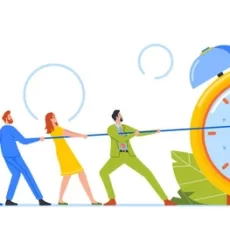Cognitive Behavioural Therapy is based on the premise that it is an individual’s distorted thoughts and subsequent beliefs about an event that results in emotional and behavioural consequences, as opposed to the event in itself. The A-B-C model under CBT explains this: activating event -> belief -> consequences. Thus, by focussing on beliefs and changing resultant distorted thoughts to more realistic and logical ones, maladaptive consequences can be changed to adaptive ones.
Thought Stopping is a CBT based technique. Oftentimes, rumination over negative thoughts results in worse consequences than the negative thought itself. However, once a negative thought surfaces, rumination becomes an almost automatic process. Eventually, the thoughts themselves are automated. Thought stopping is a technique wherein negative thoughts are quite literally stopped, and sometimes, replaced with more realistic or positive thoughts.
The traditional thought stopping technique followed a procedure wherein an individual with a negative thought would set an alarm for three mins from present. For the duration of the three mins, the individual would close their eyes and focus on the thought. At the tone of the alarm the word “STOP!” was to be shouted and all energies focussed on stopping the thought consciously. The idea was that the shock of a sudden sound would naturally stop the thought, and eventually the word stop would come to be associated with the stoppage itself. In the long run, just thinking the word stop would stop the thought. The drawback of this technique was thought rebound- once the individual stopped actively putting in an effort to stop the thought, they would have a flooding of the thought which is much worse than the original thought.
The mindfulness based STOP technique on the other hand, is a helpful one. It involves orienting the self to the here and now, relaxing, and then proceeding with a clearer picture and a more focussed mind.
Rationale. When in an anxiety provoking situation, individuals usually think catastrophic thoughts, or too many thoughts at once which drives the anxiety further. The STOP technique focuses on slowing the individual, and thus their thoughts, down, and hence enabling them to proceed with a more rational and focussed line of thought.
Procedure. The procedure involves a series of four steps as illustrated below:
- S: Stop what you’re doing
- T: Take a few deep breaths
- O: Observe how you are feeling- bodily sensations, emotions, thoughts
- P: Proceed with focus and with a clearer and more rational frame of mind.
Outcome: Essentially, what happens in steps 2 and 3 is, the individual realises that the situation is not all that bad. When the less anxiety provoking sides of the situation are seen, the individual is able to incorporate this information and proceed in a calmer manner.
Who can it be used for? CBT-based thought stopping techniques have been used along with Stress Inoculation Techniques for individuals with PTSD. In addition, these techniques work great for anyone having an anxiety-provoking or stressful thought that is getting in the way of functioning.




